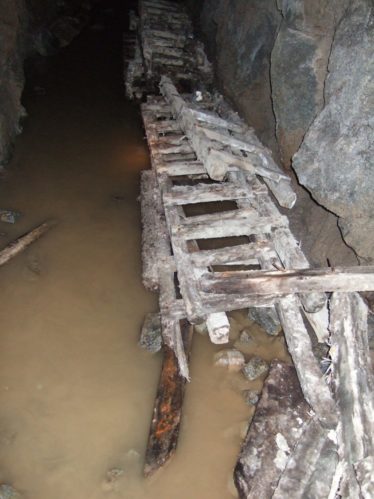A Definition of Mining Terms





The following glossary of commonly used mining terms may be a helpful companion to our mining articles
Adit
A horizontal tunnel into a mine from the surface.
Chalcopyrite Copper Iron Sulphide (CuFeS2)
Golden yellow in colour, sometimes mistaken for gold (‘fools gold’), but much harder than gold. A source of copper.
Crusher
A machine for breaking the ore taken from the mine into smaller fragments prior to dressing. Usually consists of two iron wheels (rolls) which roll together breaking the rock which is placed between them. Mostly driven by waterpower.
Dressing Floor
A surface part of the mine where to ore minerals were separated from worthless waste minerals; either by hand, by water or by machinery. Buildings and cobbled floors may still be visible in these areas.
Driller
A miner who specialized in drilling holes in the rock. The holes would be filled with explosives to break the rock. Originally holes would be drilled by hand; one miner holding a long metal drill bit and a second miner striking the end of it with a hammer. Modern mining uses mechanical driven by compressed air.
Engine House
A building which housed a steam engine which drove winding, pumping or crushing machinery.
Galena Lead Sulphide (PbS)
Bright grey in colour when fresh. Often breaks into cubic shaped fragments. Source of lead.
Granite
A rock formed deep in the Earth’s crust by cooling of magma (molten rock).
Leat
A man-made channel built to divert the flow of water from a river or a reservoir to power waterwheels or to be used in other processes of mining
Ochre Hydrated iron oxide (Fe2O3 H2O)
Very soft (earthy) yellow mineral. Used as a pigment (colouring agent).
Opencast
A surface excavation of a mineral deposit (similar to a quarry).
Ore
A mineral or mix of minerals containing metals which can be economically extracted.
Pyrite Iron Sulphide (FeS)
Brassy yellow in colour. Used as a source of iron metal and sulphur.
Schist
A rock which has been altered by heat and pressure. In Wicklow these formed as mudstones and shales before being altered. Usually dark grey in colour with prominent plate like structure and shiney surface.
Shaft
A vertical entrance to a mine from the surface
Smelting
Process of the conversion of ore minerals to native metals through the use of heat and chemical reactions.
Spaharite Zinc Sulphide (ZnS)
Dark brown or honey brown in colour. A source of zinc.
Sulphides
Minerals composed of one or more metals in a compound with sulphur (e.g. Galena is lead sulphide – PbS)
Tramway
A narrow gauge railway used for transporting rocks, ore and materials over the surface of the mine.
Vein
A crack or fissure within the rocks which contains ore minerals. Usually vertical or sub-vertical and extending downwards below the surface.




No Comments
Add a comment about this page